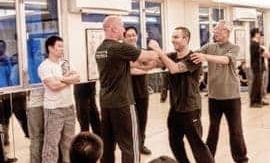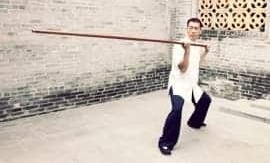
ANIMAL PREDATORS USUALLY ONLY KILL TO SURVIVE. HUMANS, ON THE OTHER HAND, FIGHT FOR NUMEROUS REASONS. 95% OF ALL FIGHTS DON’T EVEN INVOLVE SURVIVAL AT ALL. UNFORTUNATELY, AGGRESSION IS A NATURAL HUMAN BEHAVIOUR, WHICH IS OFTEN STIMULATED UNDER THE INFLUENCE OF ALCOHOL AND DRUGS.
Violent confrontations can occur for a variety of reasons, such as being in someone’s “territory”, a heated discussion, bullying, and sometimes for no reason at all.
News reports about mindless violence have seen an increase over the years. On Facebook, you see more and more videos of kids beating up each other, and robberies gone wrong. If you do a search on YouTube, you will find numerous uncensored videos of violent street fights.
The image of aggression used to have a shocking effect on people; however, the amount of graphic violent acts that are displayed on TV and shared on social media sites has rapidly changed the way people react to violence. Many people have simply become desensitised to violence.
During the 12 years, I worked within the armed forces, I learned that everybody has the killer instinct buried deep inside them—an absolute non-ethical fury. Normally, it’s well hidden away due to people’s values and their understanding of what is right and wrong. However, the “right” trigger can easily activate it.
During wartime, people are able to do the cruellest things often due to religious beliefs, hate or revenge. Unfortunately, this cruelty can also be found on the streets. Recently, the news was filled with images of a group of guys beating up a girl—hitting and kicking her in the head while she was already unconscious on the ground. They clearly didn’t have any moral or ethical boundaries.
An aggressor will carefully pick a victim he believes he can easily control. Rules do not bind a street fighter and he’s willing to play dirty to win. He often has street fighting experience and isn’t afraid to use a weapon. Probably the most frightening character trait is that he’s not scared to fight at all! He is prepared to get hurt and knows no mercy. In addition, bystanders like to interfere—maybe even helping the aggressor by kicking the person who’s on the ground. Strangely, they never seem eager to help the person who’s getting beaten up.
Some martial arts instructors totally lose sight of this reality and teach their students a useless series of drills not very different from “Master Ken” on YouTube. Reality is very different though. Adrenaline kicks in and the brain will create a substance that actually makes you dumber! This automatic neurological response is part of our human defence mechanism. It allows us to defer the feeling of pain and it awakes our instinctive triggers. Other responses that may occur and influence our state of mind are tinnitus, light flashes, muscle twitching and the loss of coordination. So trust me, street fighting is an entirely different ball game! These effects cannot be trained in sparring or training conditions, but they will affect your skills in a real fight.
Unfortunately, some people seem to doubt Wing Chun’s “weapons and responses” and add ground fighting, high kicks and chokes to their syllabus—all in an attempt to modify the system they once trusted in order to make it “complete”. In my opinion, the only things they complete are their personal shortcomings. An alpinist who doesn’t trust his climbing gear will surely fall off a cliff and die. It’s the same with fighting. If you’re not confident that Wing Chun has the solution, you will surely lose the fight.
I prefer to focus on my Wing Chun training and become better and more skilled at it. I don’t want to focus on ground fighting—as being on the ground is indeed not the best place to use your Wing Chun skills. The focus should be on winning the fight standing up. I don’t want to spend my time training techniques from another system simply to use as an answer for a situation I don’t want to end up in.
Don’t be limited to the actions we train in the forms. Don’t look at them as applications, but as a guideline for our fighting behaviour. If you kick a person in the face while he’s down on the ground—that’s Wing Chun! If you use a headbutt to his nose as his face is close to yours, why not? You are simply applying the concept of “the closest weapon to the closest target”.
If you end up in a bar fight and you’re limited by space, use the surroundings to your advantage. Po Pai can bring the aggressor into a lot of trouble. Imagine its use close to tables, chairs, or even a staircase. The aggressor will not be able to fight you before solving his “situation”. Perhaps you do have the chance to kick him into the crowd. That could be a great opportunity to re-engage. That’s Wing Chun! Sometimes you simply need to look outside the box, but all the while staying within the concepts of our beloved Wing Chun. Don’t be a slave of Wing Chun. If you understand the concepts, all the answers are contained within the system.
If Wing Chun is designed for fighting, why do we so often see MMA fighters with a Wing Chun background perform so badly? I don’t think most of these fighters really display Wing Chun at all, but they use some of its concepts to their benefit. I can understand that. A match fight simply isn’t the same as a street fight—a match fighter is bound by numerous rules, he wears gloves and protection, and he has been able to mentally prepare himself to fight the other person in his own weight class. It’s all about scoring points in a set environment closely observed by judges. Fighters and coaches adjust to these circumstances and make compromises.
A real street fight is a completely different animal. Multiple opponents of different sizes may attack you. An aggressor might want to cut you with a broken beer bottle. Bystanders will grab their phones and record a video—they won’t help you! They might even encourage the aggressor or even participate in the fight themselves. There are no judges; no coach in your corner—THERE IS NO ONE TO HELP YOU! YOU ARE ON YOUR OWN! For this situation, Wing Chun is perfectly fitted. If you trust it and if you have trained hard, Wing Chun provides you with all answers you need.
A real fight usually occurs in four stages:
The motive that starts the provocation
This can be a variety of things. Accidentally bumping into each other, a disagreement, etc.
Checking each other’s willingness to fight
Usually, in this stage, people start shouting and pushing each other. This stage is really a psychological phase where both people check out how far the other guy is willing to go.
The actual fight
The moment where one of the fighters launches his first attack.
Disengage/run
Don’t wait for another attack or for the police to arrive on the scene! Run!
Many martial arts teachers will forbid the use of their system on the streets. So, what should you do? Let the aggressor beat you up? Some people might disagree with me, but I believe that in Stage Two, an attack is the best form of defence! As soon as I feel a situation is about to escalate to Stage Three, I would prefer to attack the opponent first. If I let the aggressor attack me first and I make a mistake, I may have to fight him with a broken jaw. And trust me, that is not a situation you want to be in.
In the army, we used to say that you should train as you fight, so you can fight as you’ve trained. So, train hard! And most importantly—ALWAYS BE PREPARED!



















